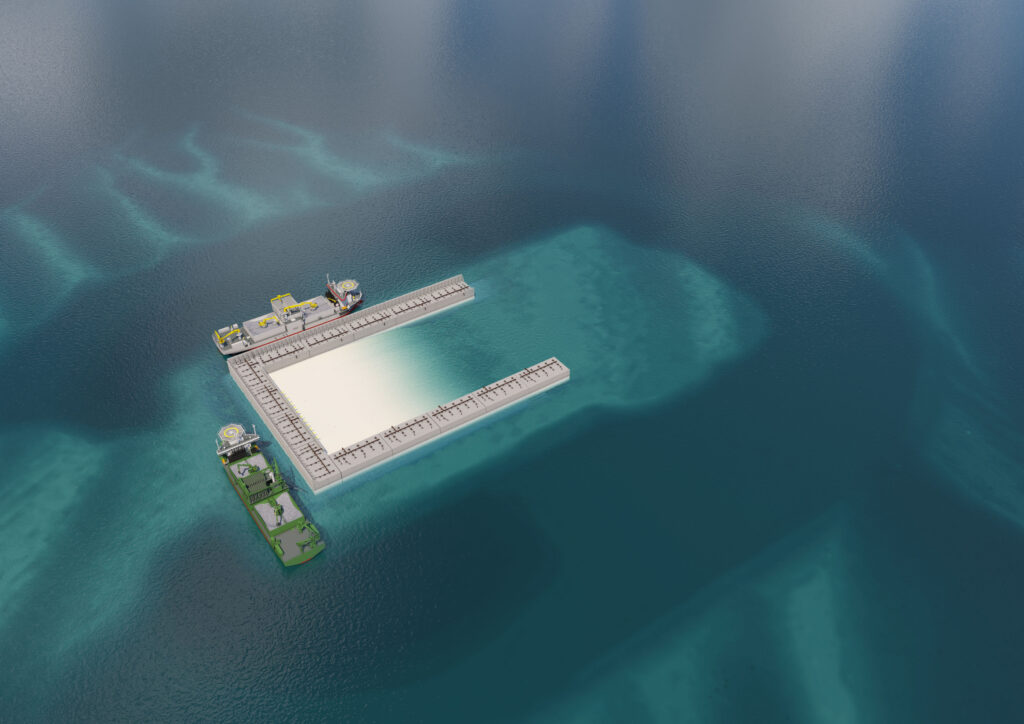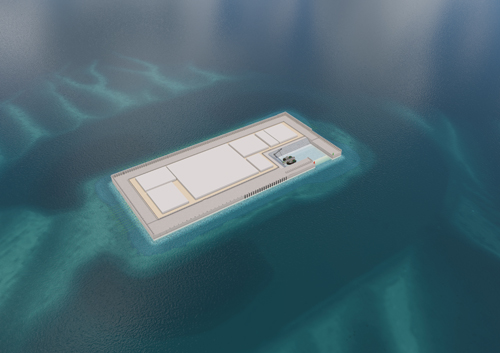General – Energy Island
The Belgian consortium TM EDISON, has won the tender for the construction of the world’s first artificial energy island.

DEME Group and Jan De Nul Group, both from Belgium, form the joint venture TM EDISON.
The construction of the foundations of the Princess Elisabeth Island will begin in early 2024 and will last 2.5 years. After that, the installation of the high-voltage infrastructure can be started. The latter will be necessary for bringing the electricity from Belgium’s future offshore wind zone to shore.
The island will also be the first building block of an integrated European offshore electricity grid that will connect various hubs and countries together. For instance, Belgium wants to build additional joint interconnections with Great Britain and Denmark.
These will give our country access to the massive amounts of renewable energy that are needed to make our industry less dependent on fossil fuels in the short term.
The tender process for the island started in January 2022. Elia received multiple bids from companies based in Belgium and abroad. On the basis of the defined criteria, the Belgian consortium TM EDISON emerged as the winner. Elements such as technical quality and commercial and contractual conditions played a significant role.
An innovative tour de force
The Princess Elisabeth Island will be the world’s first artificial energy island that combines both direct current (HVDC) and alternating current (HVAC). The island’s high-voltage infrastructure will bundle the wind farm export cables of the Princess Elisabeth zone together, whilst also serving as a hub for future interconnectors with Great Britain (Nautilus) and Denmark (TritonLink).
These are so-called ‘hybrid interconnectors’ that have a dual function and are therefore more efficient. They facilitate the exchange of electricity between countries and are also connected with gigantic offshore wind farms in the North Sea that will in due course provide our country with large volumes of renewable energy.
The energy island will be located about 45 kilometres off the coast. The area set aside for the installation of the electrical infrastructure will be approximately 6 hectares in size.
The artificial island will be located within the Princess Elisabeth wind zone and will be constructed from concrete caissons filled with sand. A small harbour and helicopter platform will also be provided in order to allow maintenance crews to visit the island. The energy island has received funding from the European Covid Recovery Fund. The Belgian government decided to award the island with a grant of approximately EUR 100 million.

Timing
Now that the construction contract has been awarded, the design of the island can be finalised. The construction of the island will start in early 2024 and will continue until August 2026. The caissons will be built and installed in 2024 and 2025. These will form the contours of the island. After that, the base of the island will be raised and prepared for the construction of the electrical infrastructure.
It will be connected with the new offshore wind farms and with the Elia onshore grid. In order to deliver the additional electricity to consumers, it is crucial that the Ventilus and Boucle du Hainaut grid reinforcement projects are realised at the same time. Elia aims to ensure all wind farms are fully connected to the mainland by 2030.
“This project is a pioneering one for several reasons. It is the most cost-effective and reliable way to bring offshore wind to shore. It will be an island that provides options for the future. When we connect it to other countries, the Princess Elisabeth Island will become the first offshore energy hub. After our construction of the first hybrid interconnector in the Baltic Sea, the island is another world first. It solidifies Elia Group’s position as a company that is at the cutting edge of technology, which is necessary for the energy transition,” says Chris Peeters, CEO Elia Group.
“We are looking forward to working together to achieve this technical tour de force. The construction of the world’s first artificial energy island reaffirms our country’s expertise in realising complex projects at sea. The focus for TM EDISON lies in qualitative execution that involves the lowest possible carbon footprint and the rising water level of the North Sea,” adds Luc Vandenbulcke, CEO DEME Group.
“Belgium has been a pioneer in offshore wind power for 15 years and is once again demonstrating its expertise today through its first energy island – which is also a world first. Our offshore expertise is now recognised worldwide. By continuing to innovate, we are also strengthening our position for the future. We are giving our Belgian companies another chance to be true pioneers, both here and abroad. So we are once again highlighting our country on the world map,” concludes Tinne Van der Straeten, Federal Minister of Energy.
